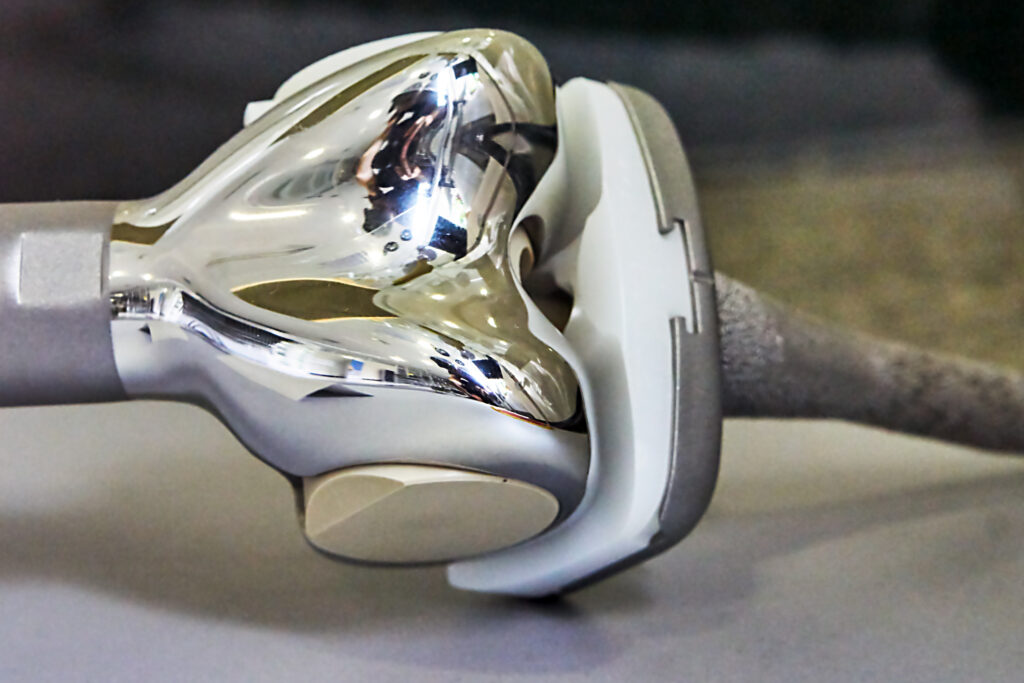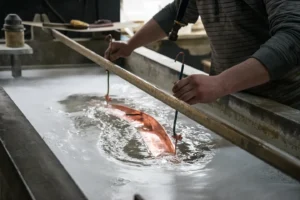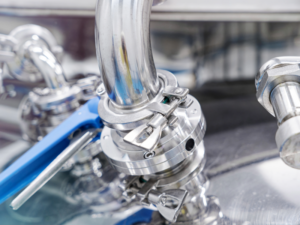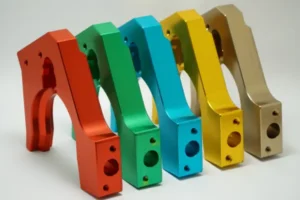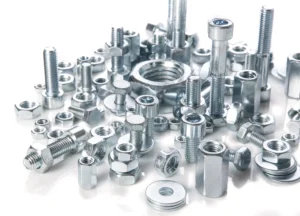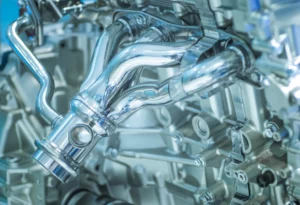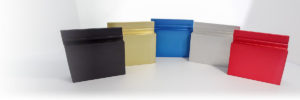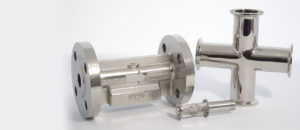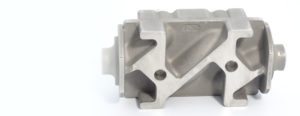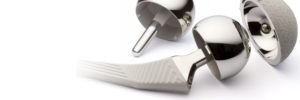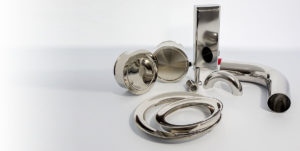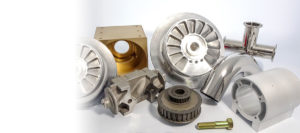When it comes to achieving a highly reflective, polished finish on metal surfaces, there are two primary methods: mechanical polishing and electropolishing. Both processes can yield exceptional results, but they each have their strengths and weaknesses, making them better suited for specific applications.
Here we explore the differences between these two methods and provide guidance on when to use mechanical polishing and when to use electropolishing to achieve a reflective polished finish.
Mechanical Polishing
Mechanical polishing is a process that involves physically abrading the surface of a metal surface to remove any imperfections and create a highly polished finish. The process can be performed manually using sandpaper or polishing compounds, or it can be automated using specialized equipment. The amount of material that is removed during the process depends on the starting surface and the aggressiveness of the abrasive used. As a general rule, the rougher the starting finish, the more material will be removed during mechanical polishing.
One of the primary advantages of mechanical polishing is that it can be used on a wide range of metals, including stainless steel, aluminum, brass, copper, and titanium. Additionally, the process can be used to remove scratches, dents, and other imperfections from the surface of the metal, making it an ideal choice for restoring damaged parts.
However, there are some limitations to mechanical polishing. For one, the process can be time-consuming, especially when performed manually. Mechanical polishing can be less effective on complex shapes or parts with tight tolerances, as it may be difficult to reach all areas of the surface. Lastly, the process can result in significant material loss, particularly if the starting finish is rough and aggressive abrasives are used.
When to Use Mechanical Polishing
Mechanical polishing is ideal for achieving a highly reflective, polished finish on metals that have a somewhat smooth starting finish. This can include metals that have been machined or turned to a smooth finish or have been previously polished. It is well-suited for parts that have simple shapes or fairly flat surfaces.
However, mechanical polishing may not be the best choice for parts that have complex shapes or tight tolerances, as it may be difficult to achieve a consistent finish across the entire surface. If the starting finish is rough or heavily oxidized, mechanical polishing may result in significant material loss, which could be detrimental to the part’s performance.
Electropolishing
Electropolishing is a process that uses an electrically charged solution to remove a thin layer of material from the surface of a metal. Unlike mechanical polishing, electropolishing is a non-mechanical process, which means that it does not rely on abrasives to remove imperfections. Instead, it relies on a combination of chemical reactions and electrical currents to dissolve the surface layer of the metal, leaving behind a smooth, polished finish.
The amount of material that is removed during the electropolishing process is typically much lower than that of mechanical polishing. In fact, the material loss is generally less than 0.0001 inches, which makes electropolishing an ideal choice for parts that have tight tolerances or require precise dimensions. It can be performed on a wide range of metals, including stainless steel, aluminum, titanium, and copper alloys.
One of the primary advantages of electropolishing is that it can be used to remove a wide range of imperfections, including scratches, burrs, and other surface defects. The process can be used to remove surface contaminants, such as rust or oxides, which can significantly improve the part’s corrosion resistance. Finally, because the process does not rely on mechanical abrasion, there is no risk of introducing new scratches or imperfections during the process.
Electropolishing also has some limitations. For one, the process is generally more expensive than mechanical polishing, particularly for large parts or high volume production runs. The process may not be as effective on parts with complex shapes or contours, as it may be difficult to achieve a consistent finish across the entire surface. Finally, electropolishing may not be appropriate for parts that require a thicker coating or surface layer, as the process removes a very thin layer of material from the surface.
When to Use Electropolishing
Electropolishing is best suited for achieving a highly reflective, polished finish on metals that have a relatively smooth starting finish. This can include metals that have been machined or turned to a smooth finish, or have been previously polished. Additionally, electropolishing is ideal for parts that have complex shapes or tight tolerances, as the process can be used to achieve a consistent finish across the entire surface, without introducing new imperfections or scratches.
Electropolishing is also well-suited for parts that require high corrosion resistance, such as medical or food processing equipment. The process can remove surface contaminants and create a passive oxide layer that significantly improves the part’s corrosion resistance.
In summary, both mechanical polishing and electropolishing are effective methods for achieving a highly reflective, polished finish on metal surfaces. The choice between the two methods will depend on a variety of factors, including the starting finish and the complexity of the part.
Mechanical polishing is generally best suited for metals that have a relatively smooth starting finish and simple shapes or contours, while electropolishing is ideal for metals that have a relatively smooth starting finish and complex shapes or tight tolerances. Additionally, electropolishing is well-suited for parts that require high corrosion resistance, while mechanical polishing may be better suited for parts that require a thicker surface layer or coating.
Ultimately, the choice between mechanical polishing and electropolishing will depend on a variety of factors, including the material being polished, the desired finish, and the production requirements. By carefully considering these factors, manufacturers can select the best polishing method to achieve the desired end result, while minimizing material loss and maximizing production efficiency.
For questions or quotes, give us a call at 781-982-0137, send an email to sales@amftechnologies.com, or complete our contact form.
